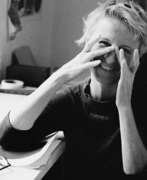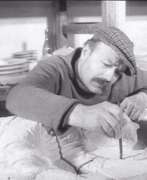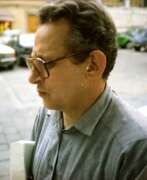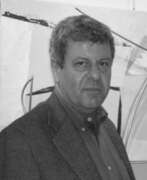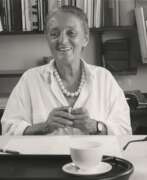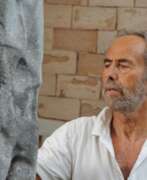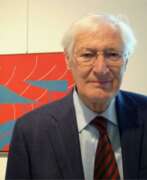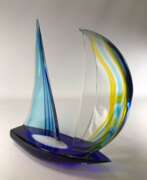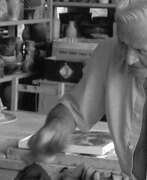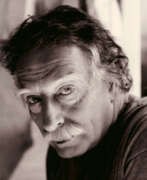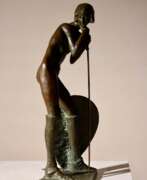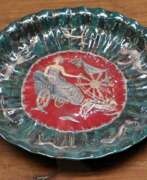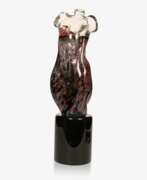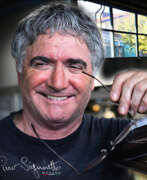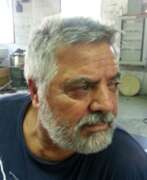Contemporary art Italian school
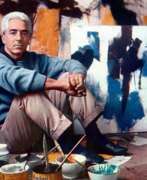

Afro Basaldella was an Italian abstractionist painter, a representative of lyrical abstraction, better known as Afro.
Afro's father and uncle were decorators, his two older brothers became sculptors, and to avoid confusion with surnames, the artist began signing his works with his first name only. Bazaldella trained in Florence, Venice and Rome. Shortly after graduation, his first monographic exhibition was held in Milan.
From 1935, Afro exhibited regularly at the Quadrennale in Rome and the Biennale in Venice. He made frescoes, notably for the Udine Opera House, and mosaics, and tried his hand at painting in a variety of directions. In 1941 he became a lecturer in mosaic painting at the Venice Academy of Fine Arts, and in 1950 he caused a sensation in the United States, and by the mid-1950s Afro's art was world famous.
Afro interpreted the Italian tradition in a modern abstract form that resulted from his painterly studies of color harmony.


Gastone Biggi was an Italian painter, sculptor, writer, poet, and musicologist.
Biggi combined painting with his activities as an art writer and musicologist. In 1962 his key work The Birth of the Point was published, theorizing the study of the sign module, which he would develop throughout his life. That same year he formed Group 1.
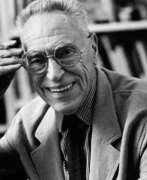

Achille Castiglioni was an Italian architect and designer of furniture, lighting, radiograms and other objects. As a professor of design, he advised his students "If you are not curious, forget it. If you are not interested in others, what they do and how they act, then being a designer is not the right job for you."
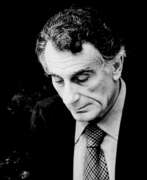

Gianfranco Frattini was an Italian architect and designer. He is a member of the generation that created the Italian design movement in the late 1950s through the 1960s and is considered to have played a major role in shaping it.


Alberto Garutti is an Italian painter and sculptor, the foremost representative of public art in Italy.
He lives and works in Milan, combining creativity with teaching at the Brera Academy. Garutti's works are installed in many public places in Italy.
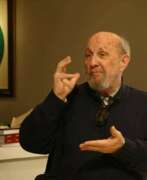

Riccardo Licata is an Italian artist known for his large mosaic paintings in public spaces in Europe.
He studied at the Academy of Fine Arts in Venice and was an active member of the international artistic movement "Space".
Licata showed his multifaceted talents in different fields of art: he worked on theatrical sets and costumes, was a sculptor and engraver, master of mosaics and a glass designer.
But his most important brainchild is the artistic language he created, a kind of alphabet consisting of symbols and graphic strokes that will characterize most of his works. These features, which Licata himself defines as imaginary letters, "graphic and pictorial writing" that draws inspiration from the language of music, are used by the artist to create works that will make him famous.
Licata lived and worked in Paris and Venice, was appointed professor of mosaics at the Ecole Nationale Supérieure des Beaux-Arts in Paris, professor of fine arts at the Sorbonne and of printmaking at the Académie Götz (Paris).
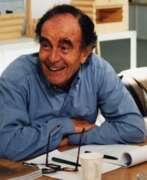

Vico Magistretti was an Italian industrial designer, known as a furniture designer and architect. A collaborator of humanist architect Ernesto Nathan Rogers, one of Magistretti's first projects was the "poetic" round church in the experimental Milan neighborhood of QT8. He later designed mass-produced appliances and furniture for companies such as Cassina S.p.A., and won several awards, including the Gold Medal of the Chartered Society of Industrial Artists & Designers in 1986.
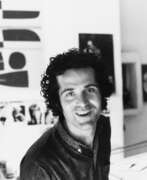

Pino Pascali is an Italian sculptor, conceptual artist, graphic designer and stage designer, one of the forerunners of the art povera style.
He studied scenography at the Academy of Art in Rome, then worked in television as a designer and cameraman, and at the same time experimented with different materials.
Pascali began to create colorful works influenced by pop art in different styles and media. He used old cans, plastic brushes, fake fur, colored water, hay, mud... One of Pascali's most impressive works is Bridge (1968), an eight-meter bridge made of steel sponges.
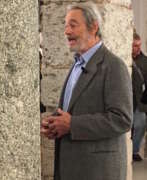

Afra and Tobia Scarpa are award winning postmodern Italian architects and designers. Their pieces can be found in museums across the United States and Europe, including collections in MoMA and the Louvre Museum. They have collaborated with companies such as B&B Italia, San Lorenzo Silver, and Knoll International. They have won a number of awards such as the Compasso d'Oro in 1969 to the International Forum Design in 1992. Their design work consists of architecture and everyday household items including, furniture, clothing, interior design, art glass. They focused on the technical and aesthetic possibilities of materials in their designs. The couple was greatly influenced by Tobia’s father, Carlo Scarpa, a Venetian architect and designer.
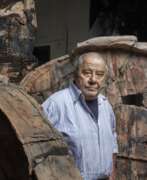

Giuseppe Spagnulo is an Italian sculptor considered one of the most important sculptors of our time.
He learned to work on a lathe at a young age in his father's ceramic workshop, then studied at the Brera Academy of Fine Arts.
Spagnulo's sculptural works of iron, terracotta and steel are remarkable for their massiveness and scale. They can be found in many public places in Europe.
Spagnulo was also a professor at the Stuttgart State Academy of Art and Design.
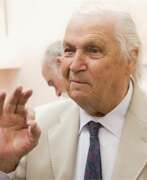

Valentino Vago was an Italian painter known for his large-scale murals.
He studied painting at the Brera Academy of Fine Arts and participated in numerous exhibitions.
Since 1979 he has devoted himself to mural painting, painting public and private spaces as well as churches in Italy and abroad. One of Valentino Vago's most impressive works is the Church of Our Lady of the Holy Rosary in Doha, Qatar, where the artist painted 12,000 square meters.


Gianfranco Zappettini is an Italian artist.
Zappettini is a representative of the Italian movement Pittura Analitica (analytical painting), which emerged in the 1970s and is considered one of the most significant and influential artistic movements of the Italian postwar period.
Zappettini's work is intertwined with Zen, Taoism and Sufism, which become part of the conception and realization of his works.
